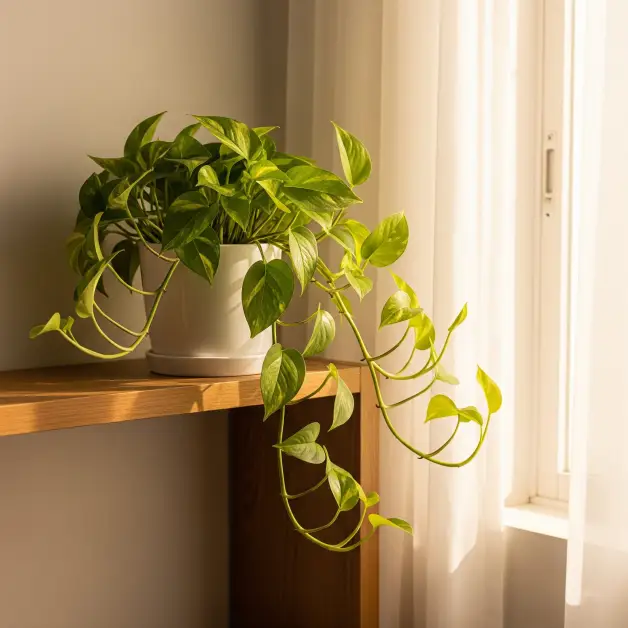If you’re a plant lover or just getting started with houseplants, Pothos (Epipremnum aureum) is probably already on your radar. These lush, trailing beauties are famous for being low-maintenance, hardy, and forgiving. But one thing new plant parents often overlook? Light.Yes, pothos can survive in low light—but there’s a big difference between surviving and thriving. In this guide, I’ll share everything I’ve learned from growing pothos in different corners of my home, explain how different varieties respond to light, and offer expert tips (based on trial, error, and success!).
How Much Light Does Pothos Need?
Bright, indirect light for 4 to 6 hours a day is the sweet spot. This mimics their natural habitat under tropical canopies, where they receive filtered light through the tree leaves.
My Real-Life Setup:
I have a mix of golden, jade, neon, and marble queen pothos in various rooms. The ones closest to my east-facing windows, where the morning sun is gentle, are the happiest. Their leaves are bigger, fuller, and show more vibrant color.Meanwhile, the pothos I kept in a darker hallway? Let’s just say it survived, but it was leggy, sad-looking, and lost its variegation.
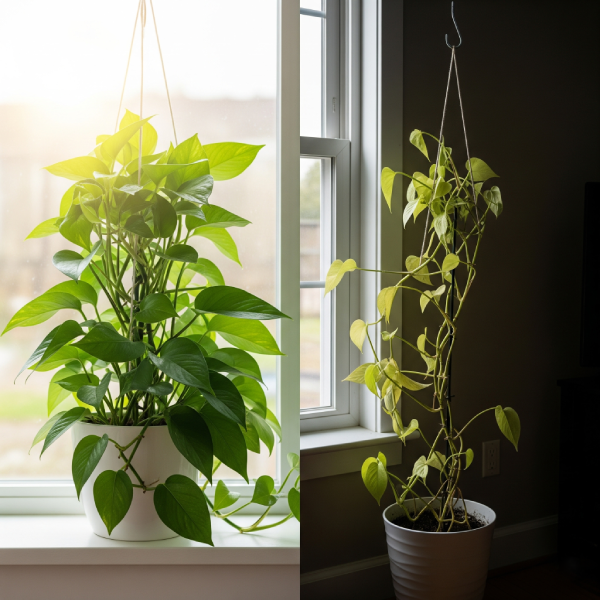
What is “Indirect Light,” Exactly?
Think of indirect light as sunlight that’s filtered or bounced off a surface. Your pothos should be able to “see the sky,” but not get blasted by direct sunbeams.
Here are examples of indirect light:
- Near a window with sheer curtains
- 5–10 feet away from an east or west-facing window
- Behind a frosted window or glass door
- A room with bright ambient light all day
Can Pothos Tolerate Direct Sunlight?
Not really. A few hours of gentle morning sun is fine, but harsh afternoon sunlight will scorch their leaves.
Signs of too much sun:
- Faded or bleached leaves
- Crispy brown edges
- Yellow patches or dry spots
I once put my golden pothos directly on a south-facing windowsill. After two weeks, the leaves turned pale and got papery edges. Lesson learned!
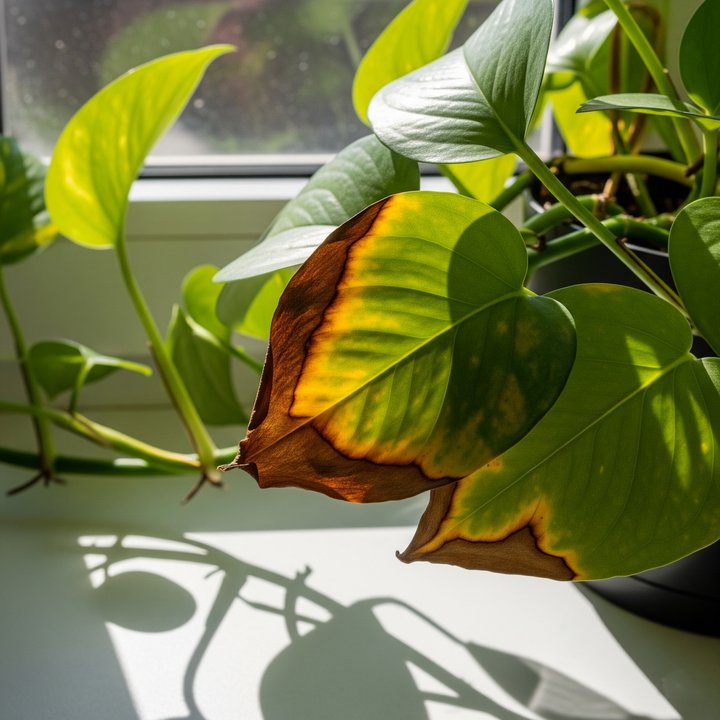
Can Pothos Live in Low Light?
Yes, but with trade-offs. Pothos will stay alive in low light, but their growth will slow down, and the plant may start looking sparse or dull.
Common issues in low light:
- Leggy growth (long stems with few leaves)
- Smaller leaves
- Loss of variegation (especially in golden or marble queen varieties)
- Slow or no new growth
Neon pothos in particular becomes dull in low light. It loses that stunning chartreuse glow that makes it stand out.
Variety-Specific Light Needs
Different pothos cultivars respond slightly differently to light.
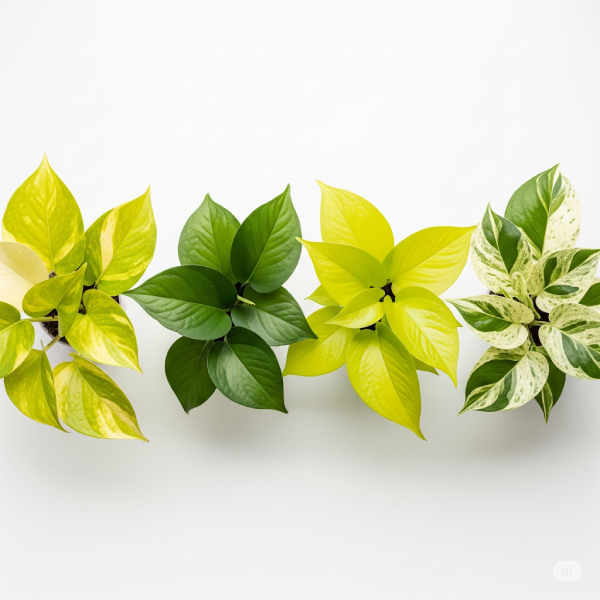
1. Golden Pothos
- Loves bright, indirect light to show off its yellow variegation.
- In low light, the yellow fades and leaves turn more green.
2. Jade Pothos
- All-green variety that tolerates low light better than others.
- Great for dim corners, but will still grow faster in brighter spots.
3. Marble Queen
- Needs lots of bright light to keep the white and green marbled look.
- In low light, it turns pale green or loses its pattern.
4. Neon Pothos
- Prefers bright, indirect light to stay vivid lime green.
- In lower light, it becomes more muted or dull.
5. Cebu Blue
- Slightly pickier—does best in medium to bright indirect light.
- Needs support (like a moss pole) and good light to get fenestrated (split) leaves.
How to Tell If Your Pothos Needs More Light
Your plant might not tell you in words, but it sure speaks through its leaves!
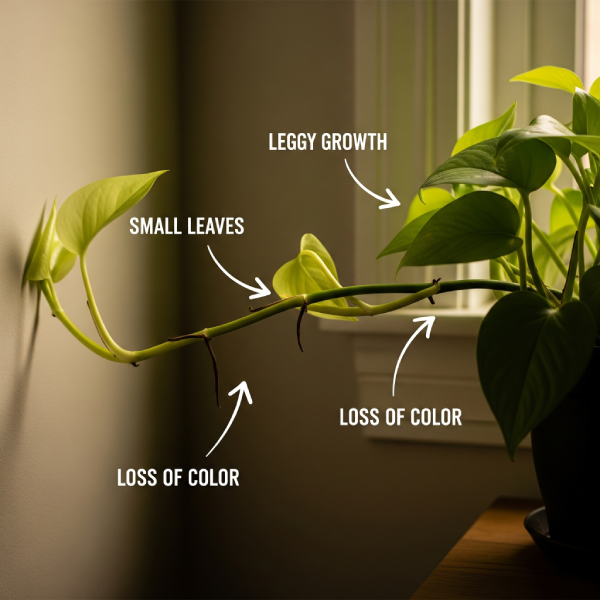
Watch for these signs:
- Long, stretched stems with fewer leaves
- Small or misshapen new leaves
- Slowed growth (especially during spring/summer)
- Dull, faded, or solid green leaves (especially on variegated types)
Tip: Compare your pothos over time. Take a photo every month—this helps spot subtle changes.
Can You Use Artificial Light?
Absolutely! I use grow lights in areas with poor natural light. A simple LED grow bulb on a timer (6–8 hours daily) can make a huge difference.
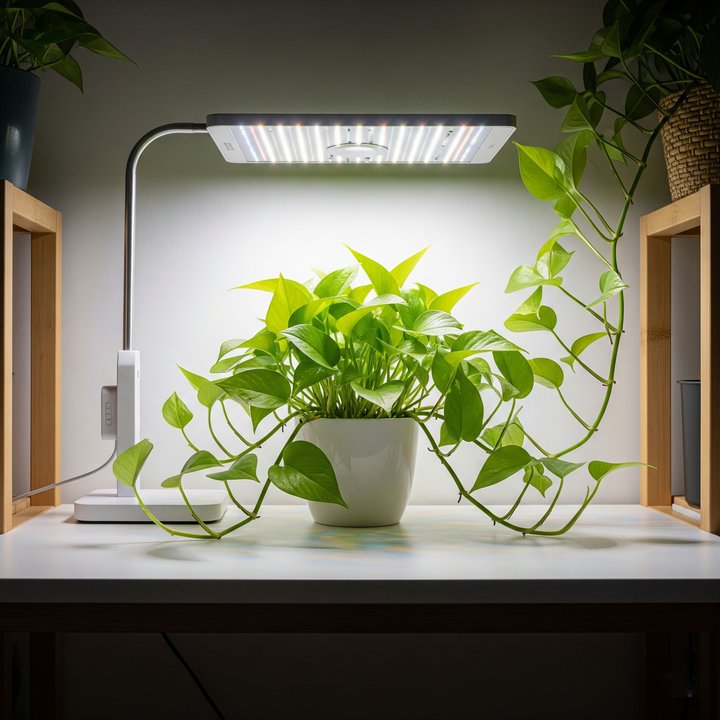
What kind of light works?
- Full-spectrum white LED grow lights
- Bulbs labeled “6500K daylight” (mimics natural sun)
- Clip-on or stand-style lights for flexibility
Make sure the light isn’t too far—12 to 24 inches above the plant is ideal.
My Light Experiment at Home
I ran a fun experiment with two cuttings of golden pothos:
- One lived 3 feet from a bright east window
- One sat in a hallway with no windows and a ceiling light
After 6 weeks:
- The east window pothos had 3 new leaves and beautiful yellow variegation
- The hallway pothos had one pale green leaf and stretched internodes
This confirmed what I suspected: Pothos can survive low light, but they don’t like it.
Tips to Maximize Light (Even If You Don’t Have Big Windows)
- Use mirrors: Bounce light around the room
- Clean your windows: Dust can block a surprising amount of light
- Rotate your plant every week so all sides get even light
- Elevate your pothos on shelves or hanging baskets closer to light sources
- Use sheer curtains to diffuse harsh sunlight
Common Light-Related Problems & Fixes
| Problem | Cause | Fix |
| Leaves turning pale | Not enough light | Move closer to a window or add a grow light |
| Yellowing with crispy edges | Too much direct sunlight | Pull away from window or use a sheer curtain |
| Loss of variegation | Too little light | Increase indirect light exposure |
| Small, slow growth | Low light or winter dormancy | Supplement with artificial light |
| Scorched leaves | Midday or afternoon sun | Shift to morning light or filtered window |
Best Window Directions for Pothos
- East-facing: Ideal! Soft morning light.
- North-facing: Okay, but may need grow lights.
- West-facing: Can work with a sheer curtain.
- South-facing: Too intense unless pulled back from the window or filtered.
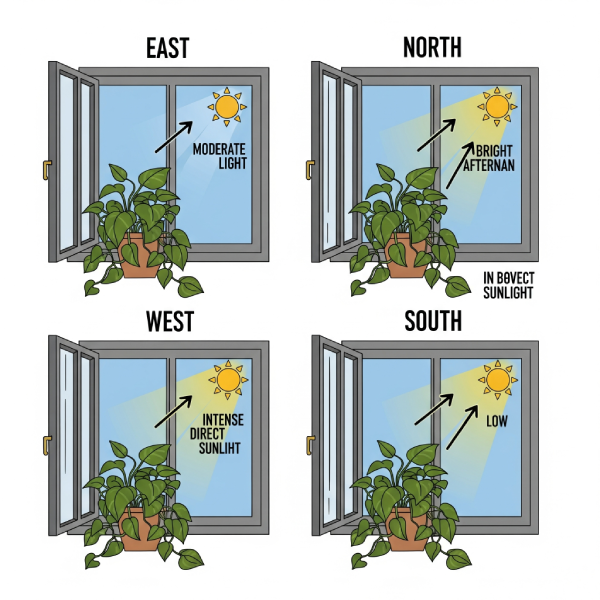
People Also Ask (Pothos Light FAQ)
How much sunlight does pothos need?
Aim for 4 to 6 hours of bright, indirect sunlight daily. Morning sun is ideal.
Is my golden pothos getting too much sun?
If the leaves are pale, scorched, or crispy, it’s getting too much direct light. Move it back or filter the light.
Can pothos live in low light?
Yes, but they’ll grow slowly and may lose their color. Bright indirect light is better for long-term health.
How to tell if pothos needs more light?
Watch for leggy stems, slow growth, and faded colors—these are signs it’s craving more light.
What color light is best for pothos?
Cool white or full-spectrum daylight (around 6500K) is great for artificial lighting.
Can pothos grow in full shade?
They can survive, but growth will be weak. Add a grow light to help them thrive.
Advice
Pothos are tough, adaptable plants—but don’t let their easy-going nature fool you. Light matters. It affects everything from how fast they grow to how beautiful their leaves look.
If your pothos is struggling, try moving it to a brighter spot or adding a small grow light. You’ll be amazed how quickly it perks up.
“Think of light as your plant’s food. The right light means more energy, more leaves, and a happier plant!”
Whether you’re growing them in water, soil, or letting them climb a moss pole, getting the light right is one of the most important parts of pothos care.
Happy growing—and remember, you don’t need to be a plant expert. You just need the right light!

